UN PO’ DI STORIA
Benvenuti ad Halaesa Arconidea.
La città di Halaesa Arconidea fu fondata nel 403 a.C. su di una collina che domina la vicina costa tirrenica e la valle del fiume Tusa. Prima delle città siciliane a schierarsi con Roma durante la I guerra punica, fu una delle cinque civitates liberae et immunes con propria autonomia ed esenzione dai tributi. Grazie alla felice posizione geografica, la città prosperò dall’età repubblicana a quella imperiale. Dopo l’occupazione araba dell’Isola la città venne abbandonata, risorgendo nell’odierna Tusa sulla sommità di una altura naturalmente fortificata.
Gli scavi hanno evidenziato un impianto urbano con cardi orientati nord-sud e ripidi decumani est-ovest lastricati a gradoni. Circondano la città mura fortificate, edificate a partire dal IV sec. a.C. Lungo l’asse del cardo massimo sono ubicati i complessi più importanti della citta, fra cui l’agorà e, in direzione nord, i “contrafforti”, una costruzione su cui transitava una strada che conduceva all’acropoli, dove è stata individuata l’area sacra, con i basamenti di due templi, uno dei quali forse dedicato ad Apollo.
L’Antiquarium espone opere scultoree, elementi decorativi e architettonici e comprende una sezione dedicata alle epigrafi greche e latine, databili dal II sec. a.C. al III sec. d.C.
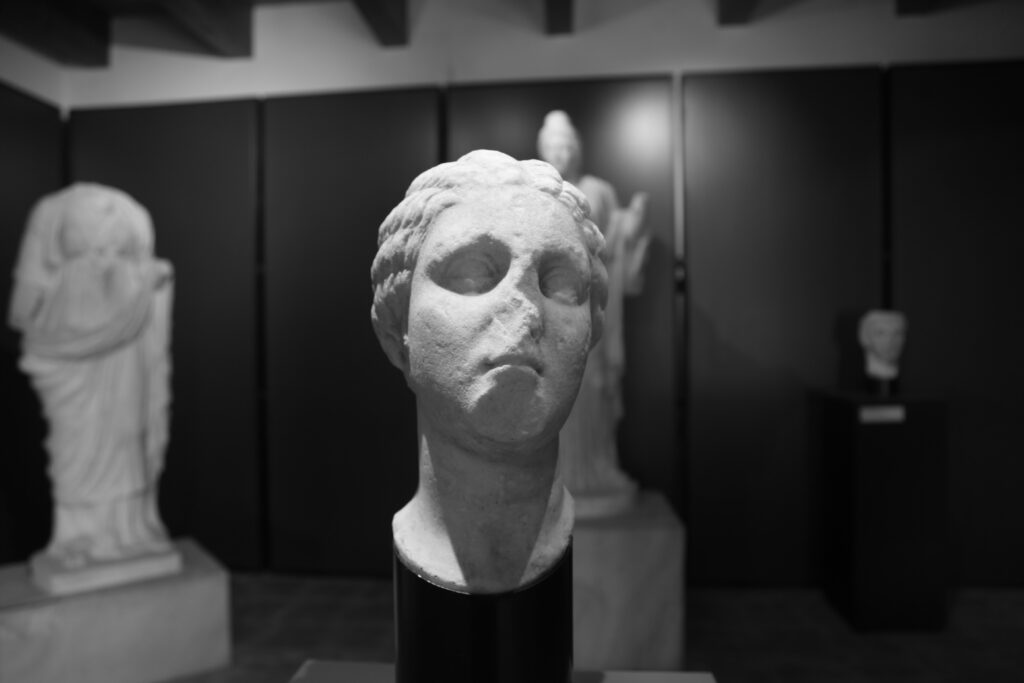
VERSIONE ITALIANA
CLICCA SULL’IMMAGINE SOTTOSTANTE PER INGRANDIRE
SCROLL DOWN THE PAGE TO ACCESS THE ENGLISH VERSION
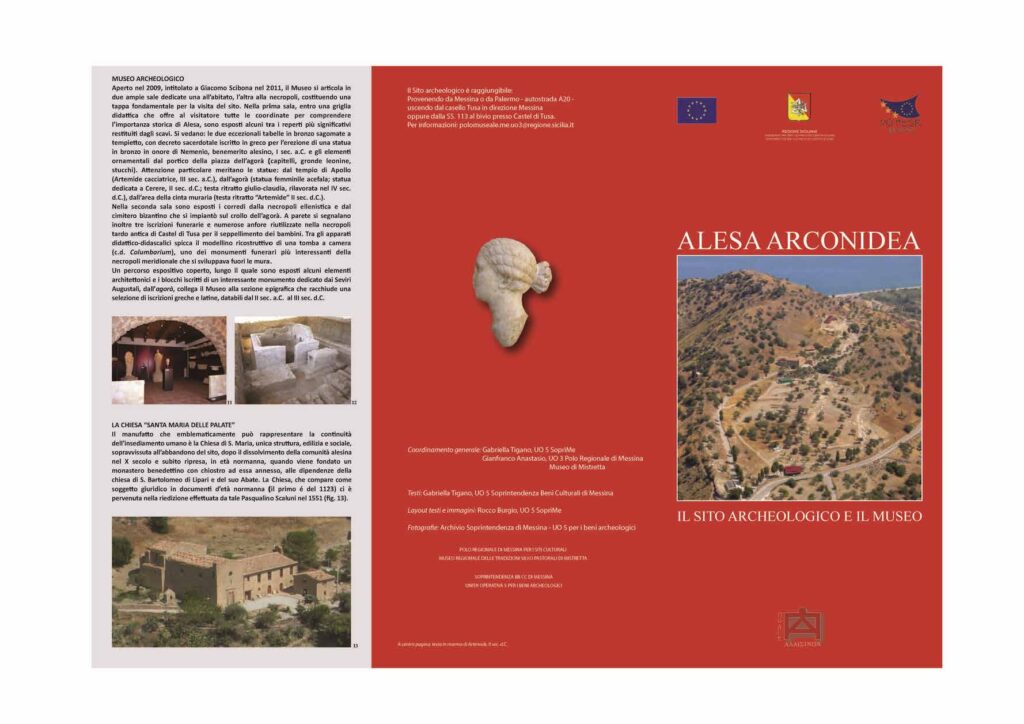
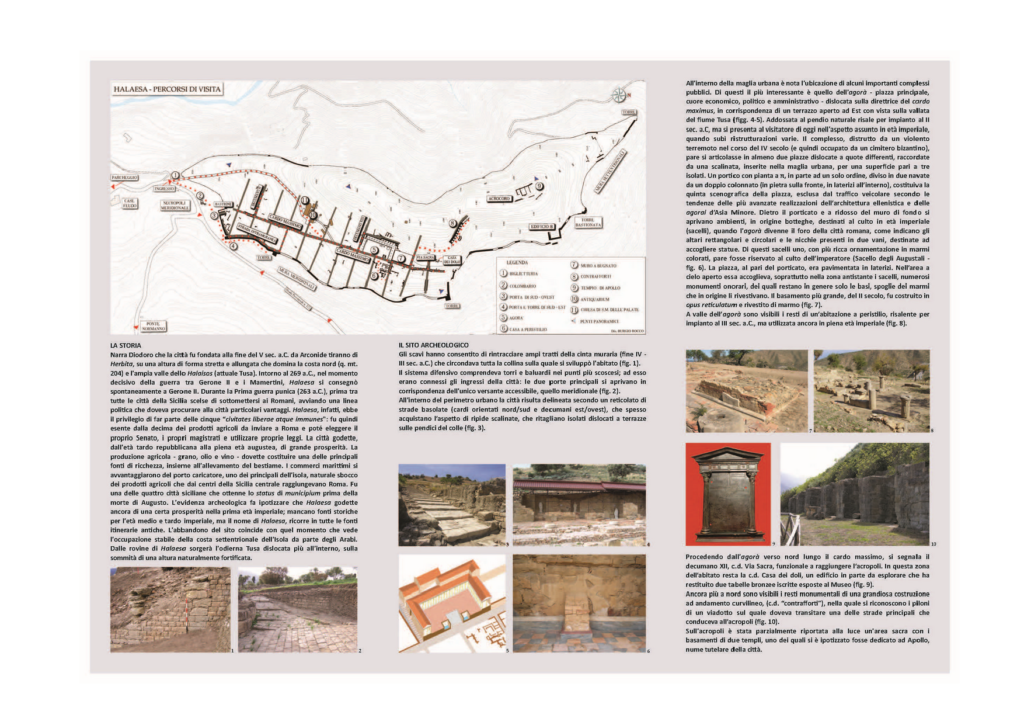
ENGLISH VERSION PAGE 1
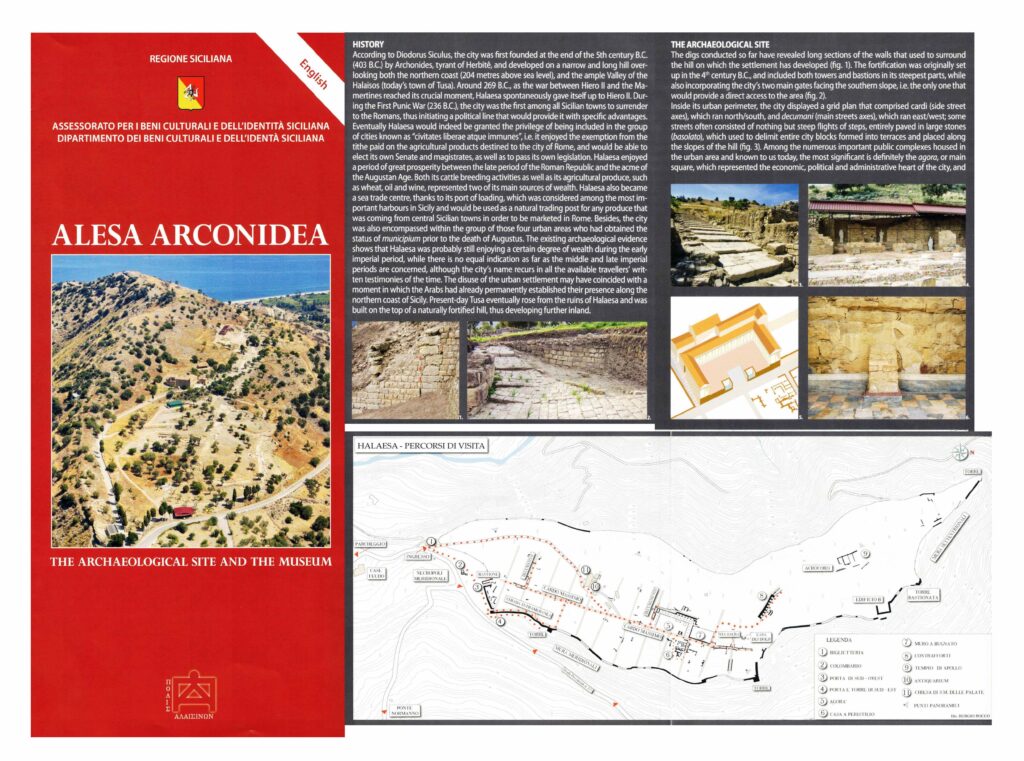
ENGLISH VERSION PAGE 2
HISTORY OF THE EXCAVATION
Welcome to Halaesa Arconidea.
The city of Halaesa Arconidea was founded in 403 BC. on a hill overlooking the nearby Tyrrhenian coast and the Tusa river valley. The first of the Sicilian cities to side with Rome during the First Punic War, it was one of the five civitates liberae et immunes with its own autonomy and exemption from taxes. Thanks to its fortunate geographical position, the city prospered from the Republican to the Imperial age. After the Arab occupation of the island the city was abandoned, resurrecting in today’s Tusa on the top of a naturally fortified hill.
The excavations revealed an urban layout with north-south oriented cardos and steep east-west decumani paved with steps. Fortified walls surround the city, built starting from the 4th century. B.C. The most important complexes of the city are located along the axis of the cardo maximus, including the agora and, towards the north, the “buttresses”, a construction over which a road passed that led to the acropolis, where the sacred area, with the bases of two temples, one of which perhaps dedicated to Apollo.
The Antiquarium displays sculptural works, decorative and architectural elements and includes a section dedicated to Greek and Latin epigraphs, dating back to the 2nd century. B.C. to the 3rd century. A.D.
(tradotto con google translator)
HISTORY OF THE EXCAVATION
FRANCESE
Bienvenue à Halaesa Arconidea.
La ville de Halaesa Arconidea a été fondée en 403 avant JC. sur une colline surplombant la côte tyrrhénienne voisine et la vallée de la rivière Tusa. Première des villes siciliennes à se ranger aux côtés de Rome lors de la première guerre punique, elle fut l’une des cinq civitates liberae et immunes dotée de sa propre autonomie et d’une exonération d’impôts. Grâce à sa position géographique privilégiée, la ville prospéra de l’époque républicaine jusqu’à l’époque impériale. Après l’occupation arabe de l’île, la ville fut abandonnée et s’éleva à nouveau sous le nom d’aujourd’hui Tusa, au sommet d’une colline naturellement fortifiée.
Les fouilles ont révélé un tracé urbain avec des cardos orientés nord-sud et des decumani abrupts est-ouest pavés de marches. Des murs fortifiés entourent la ville, construits à partir du IVe siècle. AVANT JC. Les complexes les plus importants de la ville sont situés le long de l’axe du cardo maximus, y compris l’agora et, vers le nord, les « contreforts », une construction sur laquelle passait une route qui menait à l’acropole, où se trouve l’espace sacré, avec les bases de deux temples, dont l’un était peut-être dédié à Apollon.
L’Antiquarium présente des œuvres sculpturales, des éléments décoratifs et architecturaux et comprend une section dédiée aux épigraphes grecques et latines, datant du IIe siècle. AVANT JC. au 3ème siècle.
(Tradotto automaticamente con google translator)

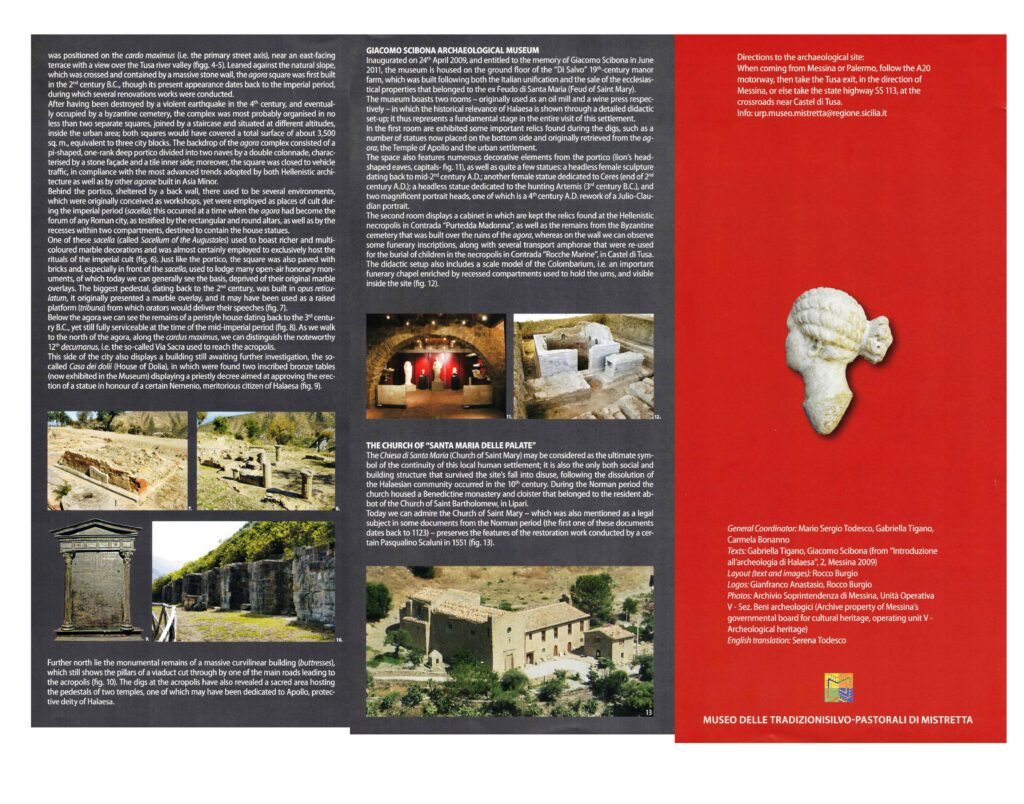
Lascia un commento